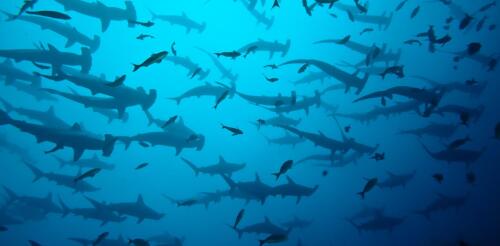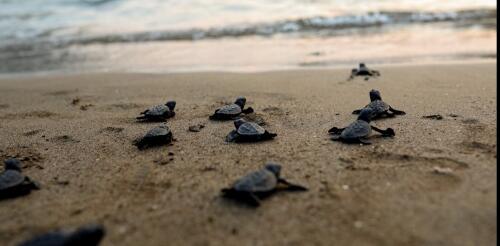Marine biology
Deep below the ocean surface, the light fades into a twilight zone where whales and fish migrate and dead algae and zooplankton rain down from above. This is the heart of the ocean’s carbon pump, part of the natural ocean processes that capture about a third of all human-produced carbon dioxide and sink it into the deep sea, where it remains for hundreds of years. There may be ways to enhance these processes so the ocean pulls more carbon out of the atmosphere to help slow climate change. Yet little is known about the consequences. Peter de Menocal, a marine paleoclimatologist and director of Woods Hole Oceanographic Institution, discussed ocean carbon dioxide removal at a recent TEDxBoston: Planetary Stewardship event. In this interview, he dives deeper into the risks and benefits of human intervention and describes an ambitious plan to build a vast monitoring network of autonomous sensors in the ocean to help humanity understand the impact. First, what is ocean carbon...
Mercury pollution is a global threat to human health, especially to unborn babies and young children. Exposure to methylmercury, a type that forms when mercury washes into lakes and streams, can harm children’s brain development and cause symptoms including speech impairment and muscle weakness in adults who consume seafood as their main food source. Methylmercury also threatens health and reproduction in fish and other wildlife. Humans, animals and birds are exposed to methylmercury when they eat fish and shellfish. Scientists have been working for decades to understand how and when fish accumulate mercury. This information is key for assessing mercury risks across different water bodies and landscapes, and for evaluating policy changes designed to reduce mercury emissions. For decades, scientists have used fish ear stones, known as otoliths, to gain insights into fish growth, migration, diet and the timing of their exposure to certain pollutants. These tiny structures of...
The Discovery Channel’s annual Shark Week is the longest-running cable television series in history, filling screens with sharky content every summer since 1988. It causes one of the largest temporary increases in U.S. viewers’ attention to any science or conservation topic. It’s also the largest stage in marine biology, giving scientists who appear on it access to an audience of millions. Being featured by high-profile media outlets can help researchers attract attention and funding that can help super-charge their careers. Unfortunately, Shark Week is also a missed opportunity. As scientists and conservationists have long argued, it is a major source of misinformation and nonsense about sharks, the scientists who study them, and how people can help protect endangered species from extinction. I am a marine biologist who worked with five colleagues in 2022 to scientifically analyze the content of Shark Week episodes. We tracked down copies of 202 episodes, w...
Playing with my children on a beach on Hatteras Island, a barrier island off the coast of North Carolina, I struck up a conversation with a man walking his dog. We were standing next to a turtle nest, which the National Park Service had roped off with a sign stating that the spot was federally protected. “Wouldn’t it be nice to know exactly when the baby sea turtles will come out?” I mused. He smiled and said “Well, we’re working on that.” That conversation generated a partnership to develop TurtleSense, a novel, inexpensive way to monitor turtle nest activity remotely. In a newly published study, we describe how it works. Participants included Eric Kaplan, the man I met on the beach and the founder of the Hatteras Island Ocean Center; David Hermeyer and Samuel Wantman, retired engineers at the San Francisco nonprofit Nerds Without Borders; IBM master inventor Thomas Zimmerman; and veterinary student Joshua Chamberlin. As a developmental n...



